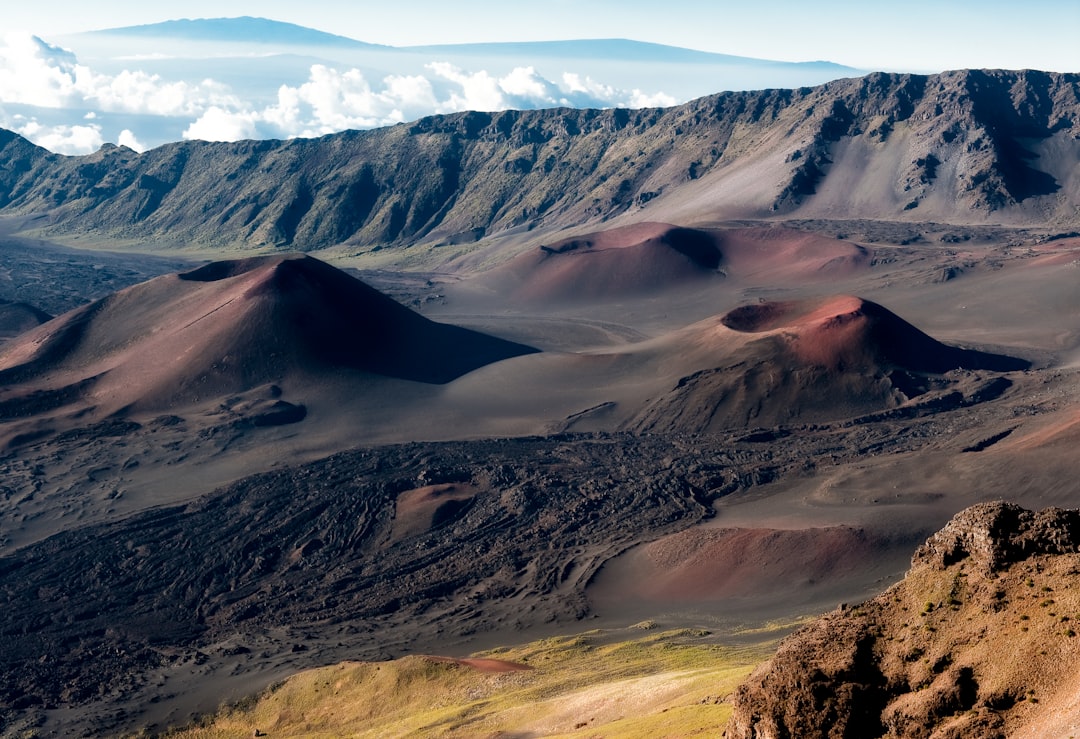Lunar geology, the study of the Moon’s composition, structure, and processes, has captivated scientists and enthusiasts alike since humanity first gazed at the celestial body. The Moon, Earth’s only natural satellite, serves as a time capsule of the solar system’s history, preserving evidence of its formation and evolution. By examining the Moon’s surface and subsurface features, researchers can glean insights into not only the Moon itself but also the broader dynamics of planetary formation and evolution.
The unique geological characteristics of the Moon, including its craters, maria, and highlands, provide a rich tapestry for exploration and discovery. The significance of lunar geology extends beyond mere academic curiosity. Understanding the Moon’s geological history is crucial for future exploration missions, including potential human colonization.
As space agencies and private companies set their sights on returning to the Moon, knowledge of its geology will inform decisions about landing sites, resource utilization, and safety measures. The Moon’s surface is a record of billions of years of cosmic events, and deciphering this record can unlock secrets about not only the Moon but also Earth and other celestial bodies in the solar system.
Key Takeaways
- Lunar geology is the study of the geological features and processes that shape the surface of the moon.
- Understanding lunar geology is important for gaining insights into the formation and evolution of the moon, as well as for potential future lunar exploration and utilization.
- The nuclear experiment involves using nuclear science to study the composition and structure of the moon’s subsurface.
- The nuclear experiment works by using nuclear technology to generate data on the moon’s subsurface composition and structure.
- The potential benefits of the nuclear experiment include gaining a better understanding of the moon’s resources and potential for future human exploration and utilization.
The Importance of Understanding Lunar Geology
The importance of understanding lunar geology cannot be overstated. As humanity embarks on a new era of space exploration, the Moon stands as a focal point for scientific inquiry and technological advancement. By studying the Moon’s geological features, scientists can better understand the processes that shaped not only our satellite but also terrestrial planets.
The Moon’s relatively unchanged surface offers a unique opportunity to study planetary processes in a way that is not possible on Earth, where erosion and tectonic activity continuously reshape the landscape. Moreover, lunar geology plays a pivotal role in resource identification and utilization. The Moon is believed to harbor valuable resources such as water ice in permanently shadowed craters and helium-3, a potential fuel for future fusion reactors.
Understanding the distribution and accessibility of these resources is essential for sustainable lunar exploration and potential colonization. As nations and private entities invest in lunar missions, knowledge of the Moon’s geology will guide efforts to establish a human presence beyond Earth.
The Nuclear Experiment: What is it?

The nuclear experiment in lunar geology refers to a groundbreaking initiative aimed at utilizing nuclear technology to enhance our understanding of the Moon’s geological composition. This innovative approach involves deploying nuclear devices or techniques to analyze the Moon’s surface and subsurface materials in ways that traditional methods cannot achieve. By harnessing the principles of nuclear science, researchers hope to gain deeper insights into the Moon’s formation, evolution, and potential resources.
At its core, the nuclear experiment seeks to leverage the unique properties of nuclear interactions to probe the Moon’s geological features. This could involve using nuclear isotopes to trace elemental compositions or employing radiation detection methods to map subsurface structures. The goal is to create a comprehensive picture of the Moon’s geology that can inform future exploration missions and enhance our understanding of planetary processes across the solar system.
How the Nuclear Experiment Works
| Component | Function |
|---|---|
| Nuclear Reactor | Generates heat through nuclear fission |
| Control Rods | Regulate the nuclear reaction by absorbing neutrons |
| Coolant System | Transfers heat away from the reactor core |
| Steam Generator | Converts water into steam using the reactor’s heat |
| Turbine | Converts steam energy into mechanical energy |
| Generator | Converts mechanical energy into electrical energy |
The mechanics of the nuclear experiment are rooted in advanced scientific principles that allow researchers to analyze materials at a molecular level. One approach involves using gamma-ray spectroscopy, which detects gamma rays emitted by radioactive isotopes present in lunar rocks and soil. By measuring these emissions, scientists can determine the elemental composition of lunar materials with remarkable precision.
This technique can reveal information about the Moon’s volcanic history, impact events, and even potential resources. Another aspect of the nuclear experiment may involve neutron activation analysis, where neutrons are bombarded onto lunar samples to induce radioactivity. This process allows for the identification of trace elements that may be critical for understanding the Moon’s geological history.
By combining these nuclear techniques with traditional geological methods, researchers can create a more nuanced understanding of the Moon’s surface and subsurface features, paving the way for future exploration endeavors.
The Potential Benefits of the Nuclear Experiment
The potential benefits of the nuclear experiment in lunar geology are vast and multifaceted. Firstly, it promises to enhance our understanding of the Moon’s geological history by providing detailed insights into its composition and structure. This knowledge is crucial for unraveling the processes that shaped not only the Moon but also other celestial bodies in our solar system.
By gaining a clearer picture of lunar geology, scientists can draw parallels with Earth’s geological history, leading to a more comprehensive understanding of planetary evolution. Additionally, the nuclear experiment could significantly impact resource exploration on the Moon. As interest in lunar mining grows, understanding the distribution of valuable resources such as water ice and rare minerals becomes paramount.
The ability to accurately assess these resources using nuclear techniques could facilitate sustainable exploration efforts and support future human settlements on the Moon. Furthermore, insights gained from this research could inform strategies for utilizing lunar resources to support missions to Mars and beyond.
The Risks and Challenges of the Nuclear Experiment

Despite its promising potential, the nuclear experiment in lunar geology is not without risks and challenges.
Ensuring that any nuclear devices or techniques used do not pose a threat to astronauts or equipment is paramount.
Rigorous safety measures must be established to mitigate any potential hazards associated with radiation exposure or contamination. Moreover, there are technical challenges related to implementing nuclear experiments on the lunar surface. The harsh environment of space presents obstacles such as extreme temperatures, radiation exposure, and dust accumulation that could affect equipment performance.
Developing robust instruments capable of withstanding these conditions while delivering accurate results will require significant investment in research and development. Additionally, international regulations surrounding the use of nuclear technology in space must be navigated carefully to ensure compliance with treaties and agreements.
The History of Lunar Geology Research
The history of lunar geology research dates back to humanity’s first observations of the Moon through telescopes in the 17th century. However, it was not until the mid-20th century that significant advancements were made with the advent of space exploration. The Apollo missions from 1969 to 1972 marked a turning point in lunar geology research as astronauts collected samples from various locations on the Moon’s surface and brought them back to Earth for analysis.
These samples provided invaluable insights into the Moon’s composition and geological history, revealing details about its volcanic activity and impact cratering processes. Subsequent missions, such as those conducted by robotic landers like Luna and Chang’e, have continued to expand our understanding of lunar geology. As technology has advanced, so too has our ability to analyze lunar materials remotely through orbital missions equipped with sophisticated instruments capable of mapping surface features and compositions.
The Role of Nuclear Science in Geology
Nuclear science has played an increasingly important role in geology over recent decades, providing tools and techniques that enhance our understanding of Earth’s processes as well as those on other celestial bodies like the Moon. Techniques such as radiometric dating allow geologists to determine the age of rocks and minerals by measuring radioactive decay rates. This method has been instrumental in constructing timelines for geological events on Earth and beyond.
In lunar geology specifically, nuclear science offers unique advantages for analyzing materials that may be difficult to study through conventional means. For instance, isotopic analysis can reveal information about volcanic activity or impact events by tracing elemental signatures within lunar samples. As researchers continue to explore innovative applications of nuclear science in geology, they are likely to uncover new insights that deepen our understanding of planetary processes across the solar system.
The Future of Lunar Geology Research
The future of lunar geology research appears promising as advancements in technology and international collaboration pave the way for new discoveries. With renewed interest in lunar exploration from both governmental space agencies and private companies, opportunities for research are expanding rapidly. Upcoming missions aim not only to return samples from previously unexplored regions but also to establish permanent human presence on the Moon.
As these missions unfold, researchers will have access to unprecedented data that can inform our understanding of lunar geology. The integration of nuclear techniques into this research will likely yield significant breakthroughs in identifying resources and understanding geological processes. Furthermore, as humanity looks toward Mars and beyond, lessons learned from lunar geology will undoubtedly shape future exploration strategies across our solar system.
Ethical and Environmental Considerations
As with any scientific endeavor involving advanced technology, ethical and environmental considerations must be at the forefront of discussions surrounding lunar geology research. The deployment of nuclear technology raises questions about safety protocols and potential impacts on both astronauts and equipment operating on the lunar surface. Ensuring that all experiments are conducted responsibly is essential for maintaining public trust in space exploration initiatives.
Additionally, there are environmental concerns related to potential contamination or disruption of lunar ecosystems during research activities. As humanity ventures further into space, it becomes increasingly important to consider how actions taken today may affect celestial bodies for generations to come. Establishing guidelines for responsible exploration will be crucial in balancing scientific inquiry with ethical stewardship of extraterrestrial environments.
The Impact of the Nuclear Experiment on Lunar Geology
In conclusion, the nuclear experiment represents a transformative approach to advancing our understanding of lunar geology. By harnessing nuclear science’s capabilities, researchers can unlock new insights into the Moon’s composition, history, and potential resources. As humanity prepares for an era marked by renewed exploration efforts on the Moon, this innovative approach holds promise for shaping future missions and informing strategies for sustainable exploration.
The implications extend beyond mere academic inquiry; they touch upon resource utilization, planetary evolution studies, and even ethical considerations surrounding space exploration. As scientists continue to navigate challenges associated with deploying nuclear technology in space while adhering to safety protocols and environmental stewardship principles, they stand poised at the forefront of a new chapter in lunar geology research—one that could redefine humanity’s relationship with its celestial neighbor for generations to come.
In recent years, the exploration of lunar geology has taken a fascinating turn with the introduction of nuclear experiments aimed at understanding the Moon’s composition and history. These experiments are designed to provide insights into the geological processes that have shaped the lunar surface over billions of years. A related article that delves into the intricacies of these nuclear experiments and their implications for lunar science can be found on the Hey Did You Know This website. For more detailed information, you can read the article by visiting
